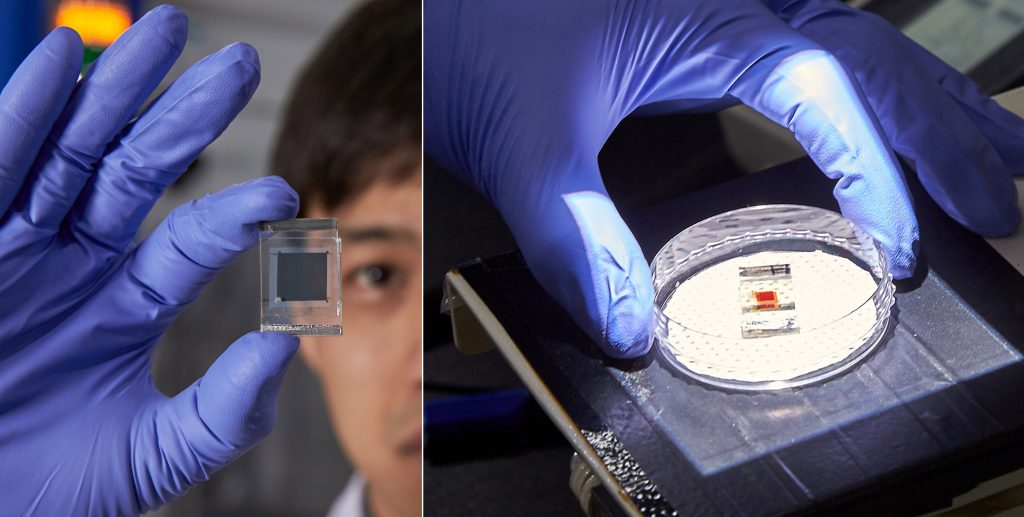Although perovskites are reaching ever more impressive efficiency levels, both in standalone and tandem cell formats, some are still put off by the presence of lead – a highly toxic material – in all of the highest performing devices.
Scientists around the world have looked into substituting the lead in common perovskite designs with various materials, including titanium, tin and bismuth. Now, a team from UNIST has identified a tin-based perovskite, which it says could open new possibilities for the application of lead-free perovskites in solar cells.
The cesium-tin based double perovskite material, Cs2SnI6, had previously been identified as promising for use in solar cells, however little research into the perovskite’s surface properties had been carried out. The UNIST team’s findings are described in the paper Surface State‐Mediated Charge Transfer of Cs2SnI6 and Its Application in Dye‐Sensitized Solar Cells, published in the journal Advanced Energy Materials.
The team created a three-electrode system allowing them to confirm that charge transfer occurred through the surface state of the material; and used this knowledge to engineer a Cs2SnI6 based organic dye sensitized solar cell.
“Due to a high volume of electrical charges in organic dyes that show high connectivity with the surface state of Cs2SnI6, more electric current were generated,” says Byung-Man Kim in the Department of Chemistry at UNIST, another lead author of this study. “Consequently, Cs2SnI6 shows efficient charge transfer with a thermodynamically favorable charge acceptor level, achieving a 79% enhancement in the photocurrent density compared with that of a conventional liquid electrolyte.”
This study is one of the first into the charge transfer mechanism of Cs2SnI6, and as such has attracted plenty of interest among researchers, as the results will provide insight into the design and direction of future devices based on this material. The results suggest that the surface state is a key issue to be considered in the design of such devices.
This content is protected by copyright and may not be reused. If you want to cooperate with us and would like to reuse some of our content, please contact: editors@pv-magazine.com.




1 comment
By submitting this form you agree to pv magazine using your data for the purposes of publishing your comment.
Your personal data will only be disclosed or otherwise transmitted to third parties for the purposes of spam filtering or if this is necessary for technical maintenance of the website. Any other transfer to third parties will not take place unless this is justified on the basis of applicable data protection regulations or if pv magazine is legally obliged to do so.
You may revoke this consent at any time with effect for the future, in which case your personal data will be deleted immediately. Otherwise, your data will be deleted if pv magazine has processed your request or the purpose of data storage is fulfilled.
Further information on data privacy can be found in our Data Protection Policy.